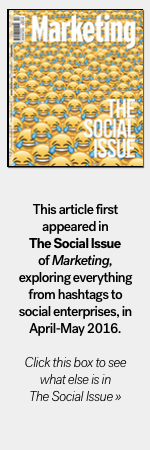Brain trust: Who’ll win the Facebook vs YouTube online video war?
Share
Who’s going to win the Facebook vs YouTube online video war? Minsun Collier, Zeina Khodr and Tom Robinson, weigh in on the issue.
Minsun Collier
The short answer is: neither.
Right now both are winning by coexisting. By complementing. Both platforms offer different experiences and therefore different opportunities for advertisers.
Facebook has scale and reach – almost every consumer is on Facebook. For consumers themselves, Facebook is a discovery platform – delivering curated content based on browsing behaviour, friends and liked brands. Facebook visitors’ intent is not to consume purely video, so it can seem intrusive, even annoying.
Facebook provides the strongest ad targeting capabilities in the market. Its data is the most reliable (95% accurate demographic targeting)
and cost-effective. However, the completion rates are low with people scrolling past on mobiles. And player sizes are small (85% of visits
are on mobile). As a social platform, video advertising on Facebook will perform if it’s engaging and relevant enough. With its granular  targeting capabilities, it gives brands near one-to-one marketing potential.
targeting capabilities, it gives brands near one-to-one marketing potential.
YouTube, on the other hand, is the world’s largest video platform.
It’s specifically designed for a better video experience – visitors are only there to consume video on demand. The dwell time is longer, often with multiple video views assisted by YouTube’s powerful recommendation engine.
As an advertising vehicle, YouTube provides various cost models (CPM or cost per mille, CPV or cost per view and CPCV or cost per completed video), several ad formats and greater cut through – with high quality video, large player sizes and better ad quality. You can also force users to watch by buying non-skippable formats, much like TV. Importantly, targeting is inferior to Facebook’s and CPMs can be quite high for the lesser targeting applied.
The key is using both together intelligently. Video created on YouTube can easily be amplified via Facebook. And YouTube views can drive Facebook brand likes. It’s the modern media definition of ‘better together’.
Zeina Kodr
General manager, Colloquial Australia
When Facebook announced in 2014 that it had overtaken YouTube’s daily desktop video views, it appeared Zuckerberg had landed a sucker punch in his ongoing arms race against Google.
Almost every ‘social media guru’ proclaimed Facebook would win the fight. ‘Experts’ called it on LinkedIn. And for a while it seemed that every digital outpost had an obituary prepared for Google’s giant. Then came the analysis… what constitutes a video view, anyway?
 Facebook ducked and weaved, adding 10-second CPV for advertisers, and followed with an uppercut at the end of 2015, announcing eight billion daily video views.
Facebook ducked and weaved, adding 10-second CPV for advertisers, and followed with an uppercut at the end of 2015, announcing eight billion daily video views.
Then, this year, Zuckerberg proudly announced his platform had cracked 100 million hours of video views per day. Impressive… but somewhere in that data lies Facebook’s own estimates that 40% of videos fail to effectively communicate messages thanks to silent auto play settings.
In the meantime, Google was busy plugging away with YouTube. It added mobile-friendly Cards, and launched Jump, Google’s 360-degree collaboration with GoPro, set to revolutionise the VR (virtual reality) experience.
In case you’re wondering, it has been reported that the red corner is clocking up around 650 million hours of view time each day – more than six times that of the blue corner.
So here we are, a few years into the so-called ‘war for video supremacy’, and one thing is crystal clear: marketers stuck trying to choose a side have lost sight of the big picture. Both platforms have enormous potential to make your content connect. The trick, as with all channels, is to tap their capabilities by aligning the strengths with your content marketing goals.
Facebook has enormous daily reach. Its seriously sophisticated yet simple to implement targeting offers many marketers a range of quick, easy and effective options to deliver highly targeted content marketing campaigns.
YouTube, on the other hand, wins search. This offers content marketers something much more valuable such as basic view metrics, evergreen organic content discovery that’s unique to its platform. Facebook and YouTube may appear to have been locked into a perceived battle for supremacy. But when considering your distribution strategy, the big two should always be considered separately.
No matter how good a content strategy is it’s mute without a robust distribution strategy… one that cuts through the hype of video views and focuses on ROI.
Tom Robinson
Head of content strategy and distribution, MediaCom
According to a recent study by Cisco, 80% of all internet traffic in 2019 will be driven by video. The stakes for both YouTube and Facebook have never been higher, so it’s no surprise really that over the last 12 months we’ve seen Facebook really step up its game when it comes to video. From playlists to embedded videos, it clearly has its sights set on usurping YouTube as the de facto source of video on the internet.
However, it will face an uphill battle for the time being. YouTube’s biggest strength is its ability to offer customers a continuous viewing experience across multiple connected devices, from smart TVs through to Chromecast, Apple TV, gaming consoles and, of course, mobile.
Facebook can continue to develop its product, but its weakness will still lie in the delivery of video. Whereas YouTube benefits from discovery and intent, Facebook’s delivery is still very much focused on distribution and in-feed viewing. This will need to change if it really wants to take that number one spot from a user perspective.
For brands this is a much more compelling way to gain the attention of an audience. Branded content still has some way to go to capture the attention of the audience in such a way that they seek it out. To put this into perspective, only three brands appear in YouTube’s top 500 channels, despite the likes of Red Bull spending millions on video content.
Facebook does have history, however, in unbundling core services into standalone offerings and that would appear to be the logical next step for the social network. Offering a dedicated connected viewing and search experience is no doubt on the cards.
If it can achieve this successfully and maintain its push into premium content, then Facebook will take that top spot as a complete entertainment and social hub. YouTube won’t go down without a fight, but the future looks bright and blue for Mark and Co.
* * * * *
Purchase a subscription and receive every issue of Marketing delivered to your home, office or tablet device »
* * * * *

















